Guitar modes lesson 2: The Dorian mode is a bittersweet minor mode – here’s how it works
Robben Ford and Nile Rodgers are just two iconic fans of a mode that countless guitarists use in riffs and solos. In the second lesson in our series on modes, Stuart Ryan takes you through the Dorian mode and jams rhythm and lead over a backing track
Built on the 2nd degree of the major scale and with a trademark bittersweet sound, the Dorian mode is a favourite amongst jazz and blues players. And, though you can certainly use it in any genre, the Dorian mode is a great choice for adding colour to guitar solos in those particular styles.
It's a minor mode and a close cousin of the Aeolian/natural minor scale, differing on just one note/interval. Our tutorial is in A Dorian so begin by familiarizing yourself with the notes, which are as follows:
A B C D E F# G
Next, move on and take a look at the how the intervals correspond to the notes:
Root, major 2nd, minor 3rd, perfect 4th, perfect 5th, major 6th, minor 7th
The true character of the scale comes from the combination of its minor 3rd and major 6th. "Why?", you ask! Well, where the more conventional, dark sounding Aeolian/natural minor scale features both minor 3rd and minor 6th intervals, it's the contrast of minor and major that perks up the Dorian mode.
Robben Ford is a great example of an artist who really knows how to target the 6th. One of the most common approaches is to play A Dorian over an Am7 chord, targeting the 6th, F#, in the process. And for many players Dorian is the scale of choice over the ii chord in the ii-V-I progression, e.g. Am7-D7-G.
We explain all this and more in our video lesson, plus there's tab and audio below.
A Dorian mode (5th position)
We'll start by playing through the Dorian mode in 5th position. Pay attention to where the crucial major 6th, the F#, is at all times. When you’ve played it a few times, try and work out some different shapes/positions and, again, always keep an eye on the all-important F# note.
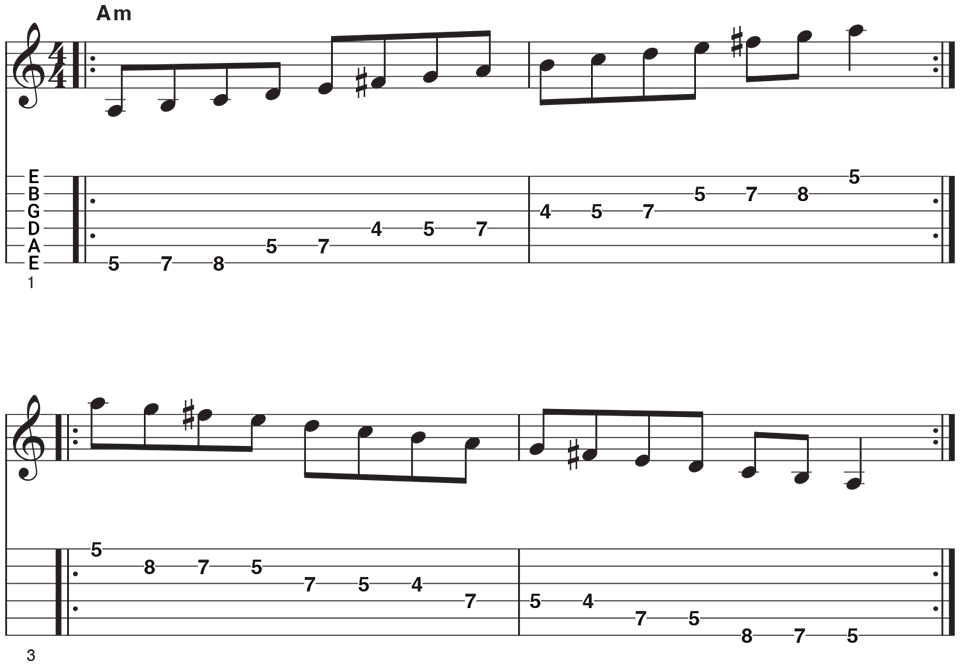
A Dorian mode (pedal exercise)
We're using an open fifth-string pedal tone approach here. Listen out for how the colour tones sound against the open A root note, especially the F# (major 6th) at the 9th fret and the G (minor 7th) at the 10th fret.
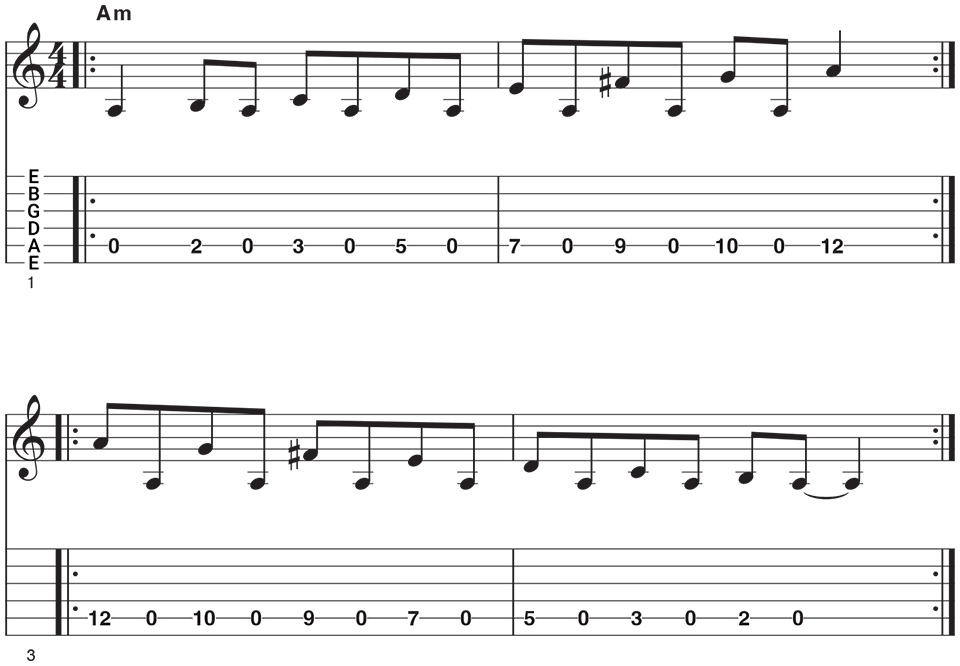
A Dorian mode (diads)
Here the scale is harmonized in 3rds but the low A drone note behind it all gives the Dorian mode context. Again, really focus on the sound of the minor 3rd (C), major 6th (F#) and minor 7th (G).

A Dorian mode (triads)
The mode opens up when it’s played as simple major and minor chords – which is what we're doing here. Spend some time on moving from the i chord (Am) to the ii chord (Bm) as these two minor chords form the bedrock of many Dorian mode chord progressions.
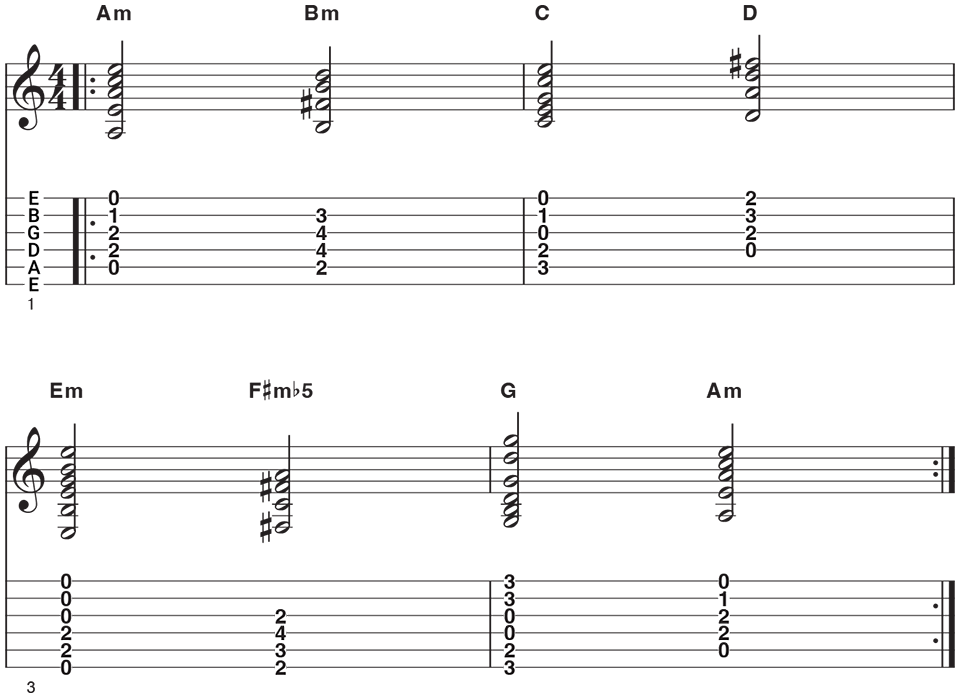
A Dorian mode (7th chords)
7th chords add more of a dimension to the Dorian mode and you’ll definitely hear the jazz character of the mode emerge just through playing these shapes. Again, focus on the Am7 to Bm7 move as it’s so common in jazz, blues and rock.

A Dorian mode (rhythm guitar riff)
The sound of a ii minor chord moving to a IV dominant is common in jazz, funk and disco especially and this 70s disco themed example shows how these chords can be used. Throw in some Nile Rodgers style muted string stabs and hey presto – instant disco!
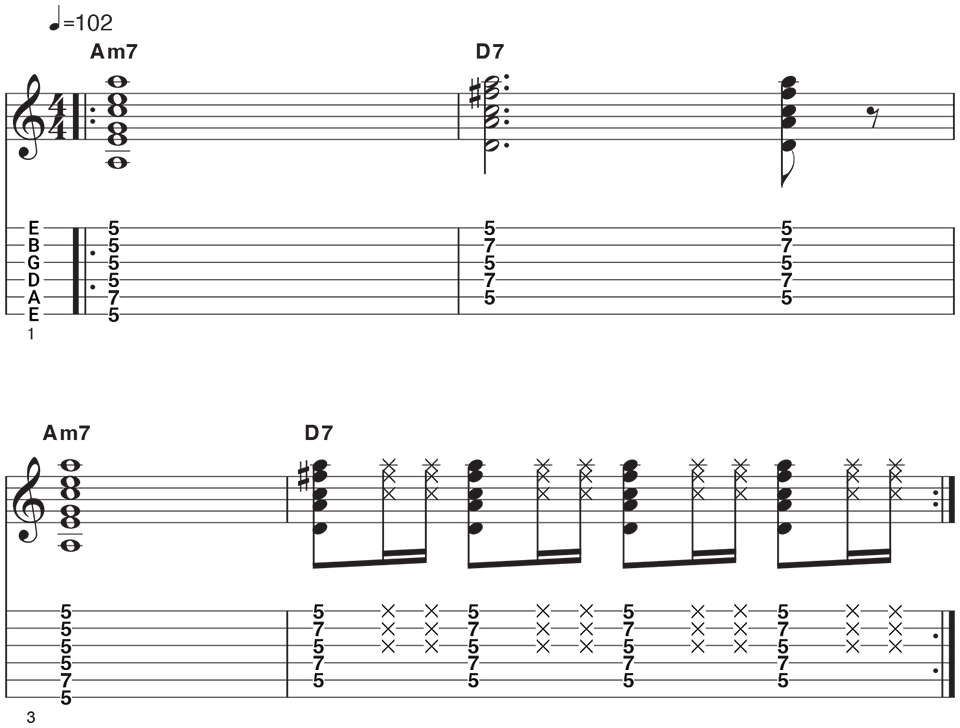
A Dorian mode (arpeggios)
Here’s the aforementioned Am7 to Bm7 move, followed by the Cmaj7 chord that's built on the minor 3rd degree of the Dorian mode. Our example is played as arpeggios but after you’ve played my parts try varying them to include different picking patterns or strumming.
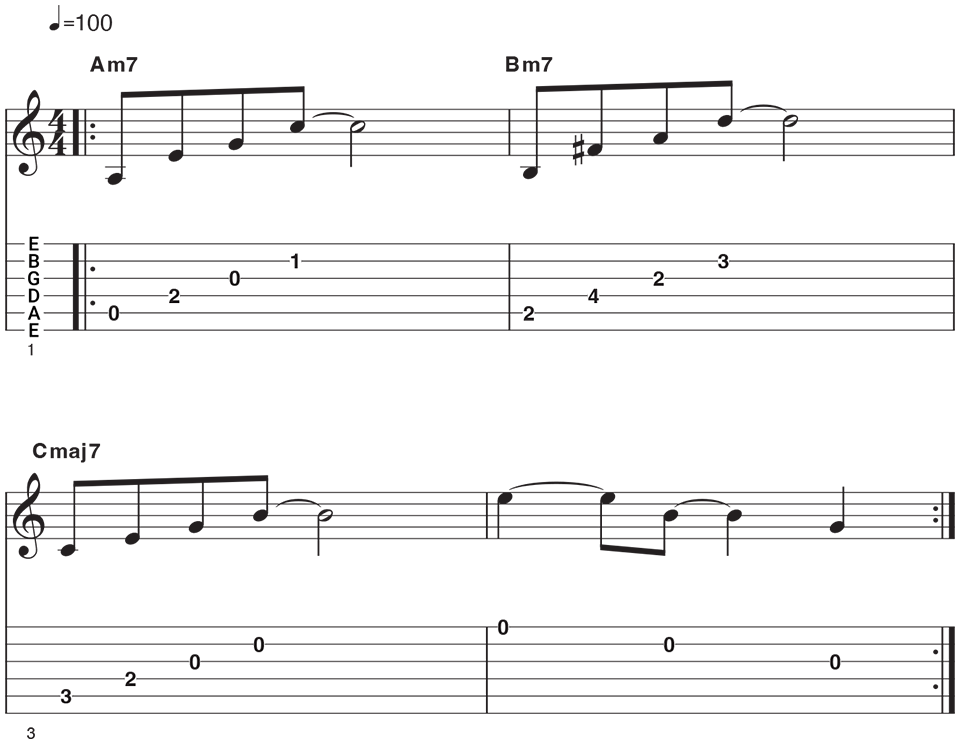
Dorian mode (lead guitar solo)
The F# note is vital in the A Dorian mode. It’s a major 6th and doesn't appear in the Am (i) chord. It’s also the major 3rd of the D major (IV) chord. So, playing this just before the move from i to IV gives a momentary ‘outside' tension followed by the ‘inside’ sound of a chord tone. Notice it here at the end of bar 1 of our solo lick.
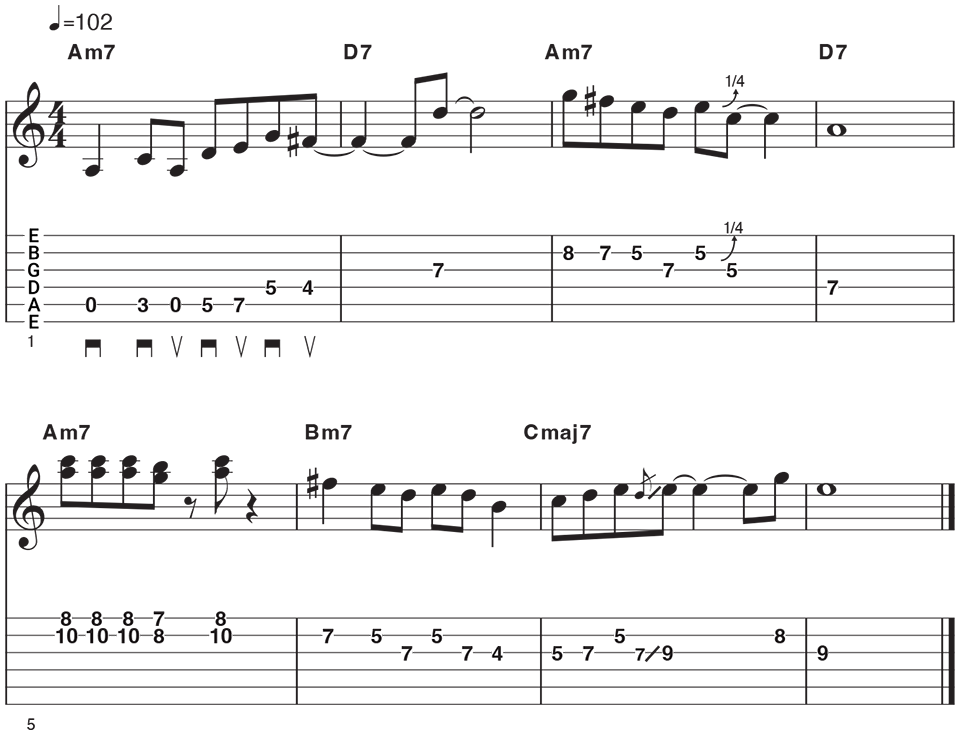
Get The Pick Newsletter
All the latest guitar news, interviews, lessons, reviews, deals and more, direct to your inbox!
Stuart Ryan is best known for his acoustic guitar playing, from Celtic fingerpicking and traditional folk to modern percussive phrasing and fresh interpretations of popular pieces. He has released several solo albums, written pieces for UK examination boards and created nine tutorial books ranging from acoustic guitar arrangements to Americana styles.

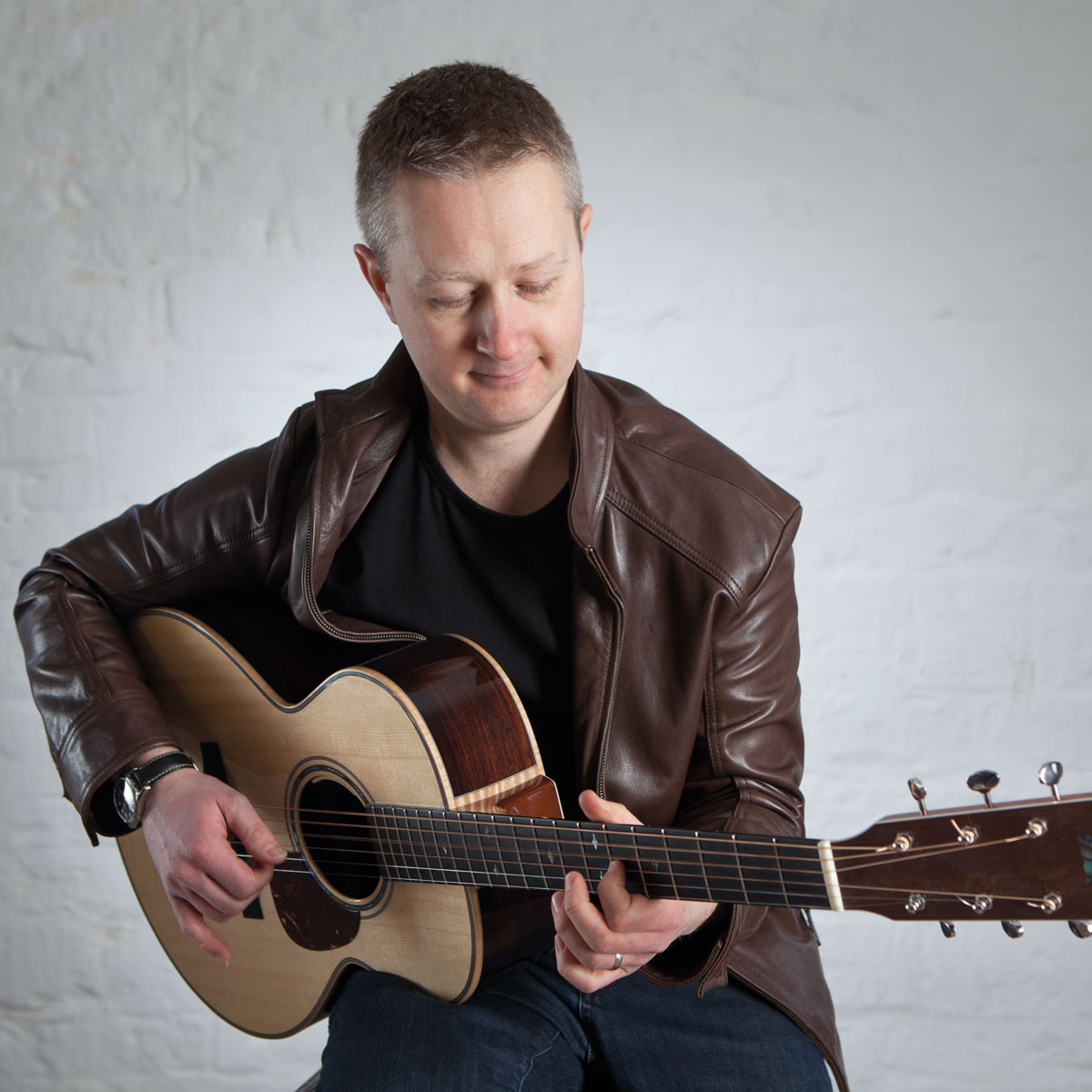









![Joe Bonamassa [left] wears a deep blue suit and polka-dotted shirt and plays his green refin Strat; the late Irish blues legend Rory Gallagher [right] screams and inflicts some punishment on his heavily worn number one Stratocaster.](https://cdn.mos.cms.futurecdn.net/cw28h7UBcTVfTLs7p7eiLe.jpg)
